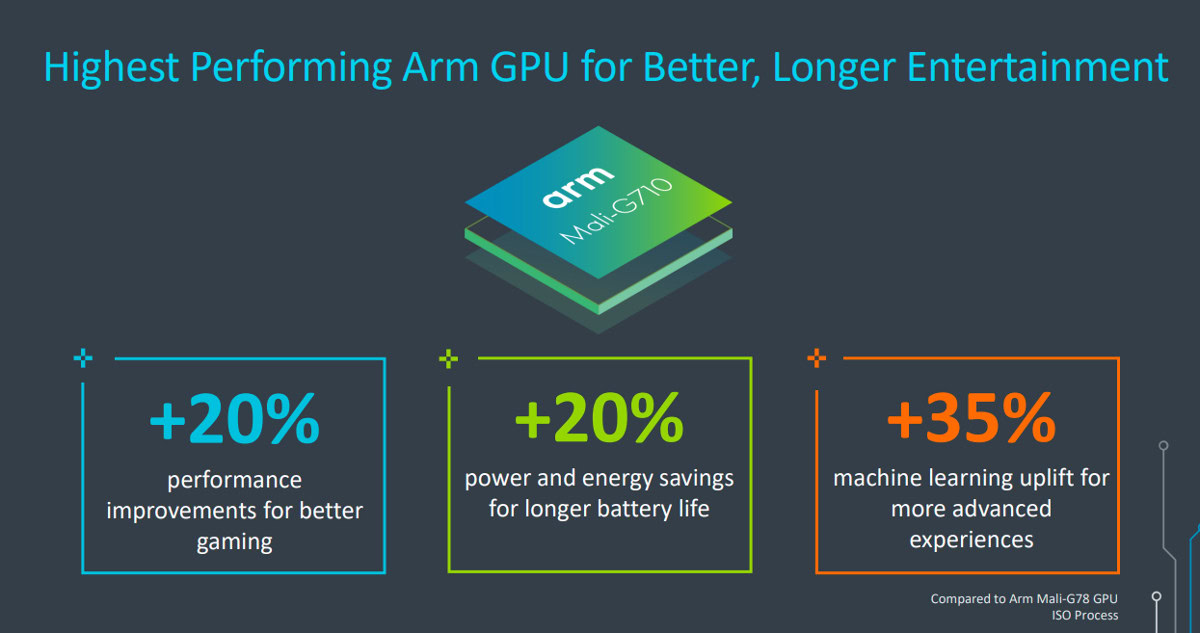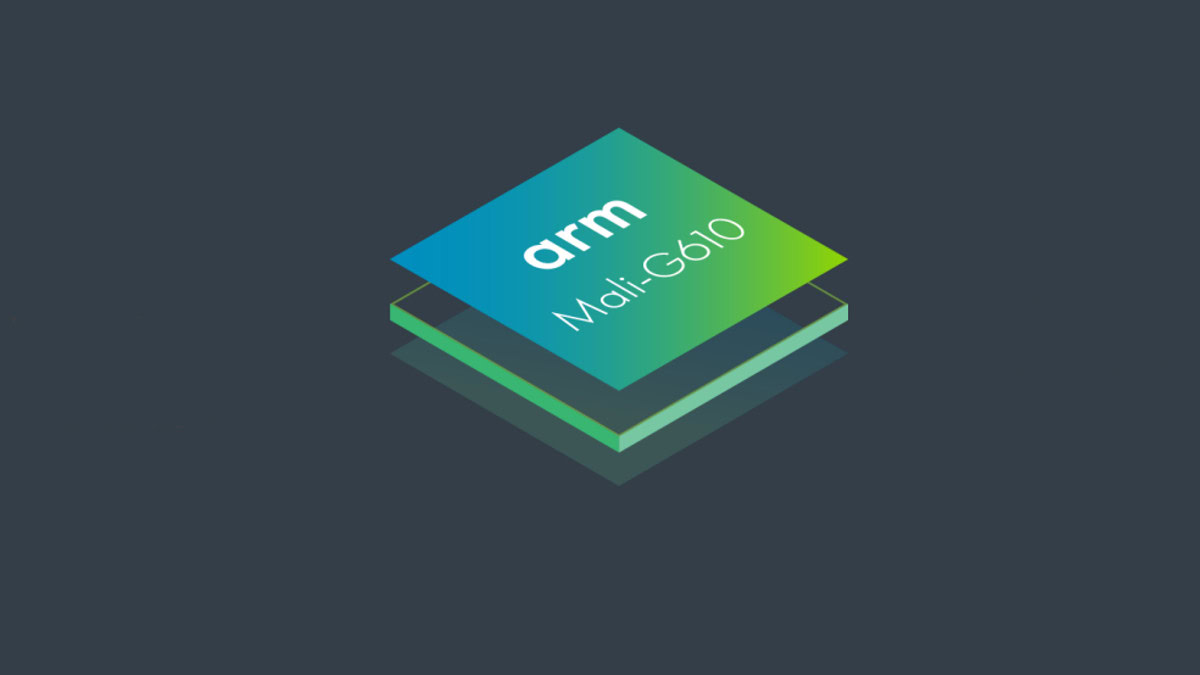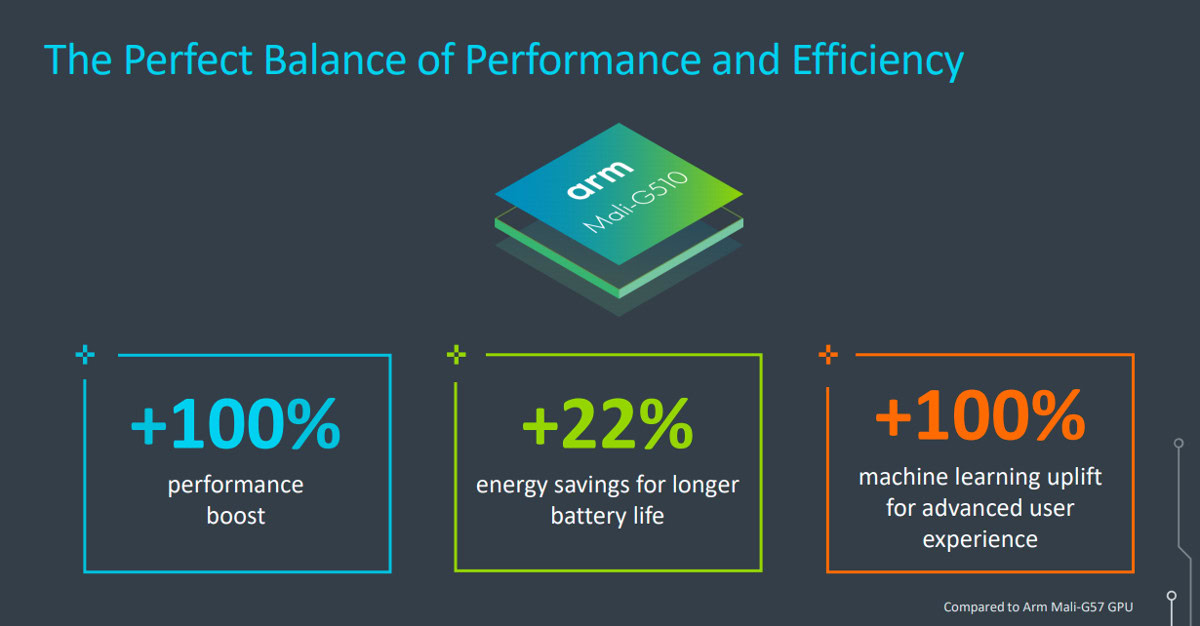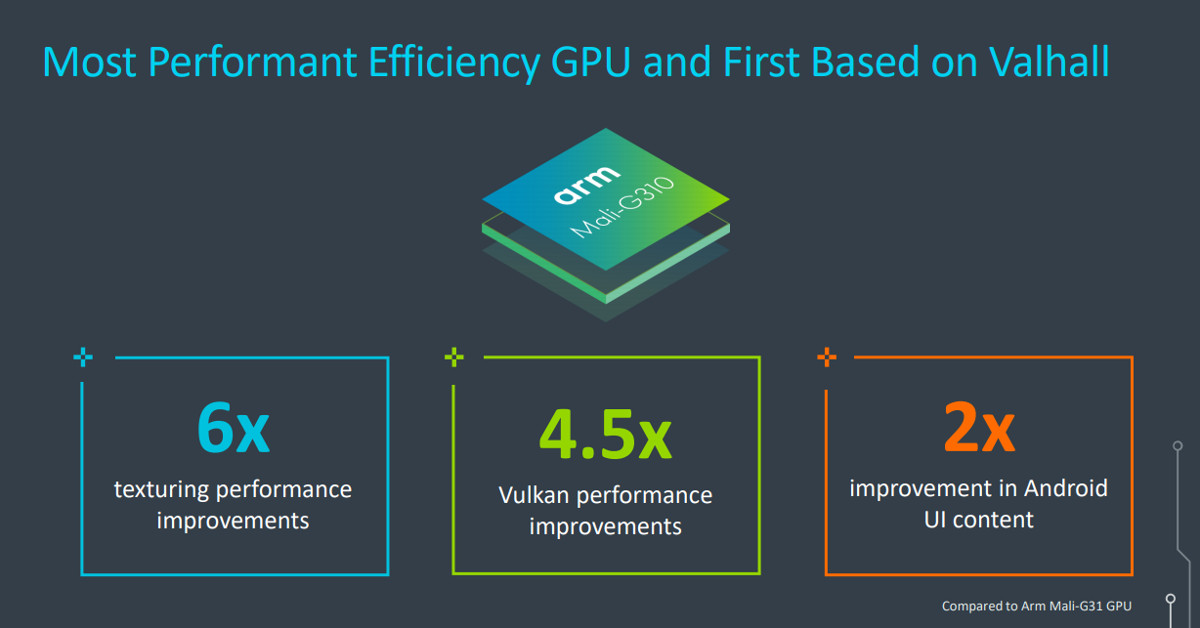Affiliate links on Android Authority may earn us a commission. Learn more.
These are the Arm GPUs you'll see in 2022's smartphones, TV boxes, and more
While Qualcomm has its own Adreno GPUs in its phones, the likes of Samsung and MediaTek largely use Arm’s Mali GPUs for their smartphone processors. Now, Arm has announced the latest generation of Mali GPUs.
From the flagship tier all the way to entry-level, here’s what you’ll be getting with the company’s latest graphics silicon.
See also: Arm Cortex-X2, A710, and A510 deep dive — New Armv9 CPU designs explained
Mali-G710: Flagship graphics gets an upgrade

Arm’s Mali-G710 picks up where the Mali-G78 left off, serving as the most cutting-edge GPU in the company’s stable. The company says you can expect a 20% boost to power and efficiency and a 35% machine learning boost compared to a Mali-G78 on the same process.
These gains are pretty notable compared to the Mali-G78, which touted a gaming performance gain of up to 17%, 10% better efficiency, and 15% faster machine learning over its predecessor. The new GPU also packs a 20% boost in performance density compared to the G78’s 15% improvement over the G77. So how did Arm deliver a more notable upgrade in the Mali-G710?
For starters, the new GPU is the third-generation Valhall architecture. Arm is also providing larger shader cores, a redesigned execution engine, and a jump to 64 FMA per clock per core (doubling the G78’s 32 FMA figure).
The Mali-G710 is a bigger step up from the Mali-G78 than the Mali-G78 was from its own predecessor.
Another important decision for all the newly announced GPUs is the switch to a so-called command stream front-end (CSF), replacing the Mali job scheduler that had been used since the earliest Mali GPUs. The CSF works in concert with the CPU to handle/allocate GPU-related tasks. It also brings Vulkan-related improvements, firmware for the GPU, reduced latency, and lower overhead.
The Mali-G710 will be available with as few as seven shader cores, all the way up to 16. Arm told Android Authority that it expects the sweet spot for shader cores (balancing performance, efficiency, and silicon area) to be “somewhere in the middle.” Nevertheless, the maximum number is a downward trend from the G78, which scales all the way up to 24 cores.
We’re expecting to see the Mali-G710 in smartphone SoCs from the likes of MediaTek at the very least, with Arm also declaring it to be the ideal GPU for Chromebooks. Samsung used the Mali-G78 in the Exynos 2100 that powers the Galaxy S21 series, but the company’s follow-up chipset will offer an AMD GPU. HUAWEI also used the Mali-G78 GPU in its Kirin 9000 chipset, but we’re unsure if US sanctions will allow it to adopt the Mali-G710.
Mali-G610: Flagship graphics, but less of it

Arm announced the Mali-G68 last year, and it was pretty much the G78 flagship GPU but with fewer cores. This same strategy is in place for the Mali-G610, which is quite simply the Mali-G710 with fewer shader cores. While the G710 scales from seven cores to 16, the G610 goes from one to six cores.
Otherwise, you’re still getting those same larger shader cores, the jump to 64 FMA per clock per core, CSF, and other architectural improvements seen in the Mali-G710. We’ve only seen the newly announced Dimensity 900 processor adopt the Mali-G68. Hopefully, the follow-up GPU enjoys higher adoption.
Mali-G510: Upping the mid-range ante

Moving down a notch, we’ve got the Mali-G510, which Arm is positioning as a successor to the Mali-G57. The G57 was found in phones like the realme X7, Redmi Note 10 5G, and Redmi Note 9T. That gives us a good idea of the segment Arm is targeting with the new GPU.
You can expect a 100% performance boost, 22% energy efficiency gain, and a 100% boost for machine learning compared to the Mali-G57. Phones with this GPU will likely bring a notable improvement in fluidity and battery life, at least in theory (assuming everything else is the same).
This mid-range GPU is available with two to six shader cores, compared to the one to six cores seen on the Mali-G57. Clients will also be able to select from up to 10 Mali-G510 configurations for their chipset, optimized for performance, efficiency, area, and more.
Mali-G310: An overdue update for the cheapest devices

The most modest GPU of the lot is the Mali-G310, and it comes as a long overdue update for the Mali-G31 launched back in 2018. This marks the first time we see the Valhall architecture in the lowest end Mali GPU line.
It too benefits from the flagship G710’s tweaks, delivering a six-fold improvement to texturing performance and a 4.5x improvement on Vulkan performance. This is compared to the Mali-G31, though, which is a few years old now. Arm also told Android Authority the G310 delivers a two-fold boost to performance across a “wide range of content” compared to the older GPU.
Both the Mali-G510 and G310 deliver Arm Fixed Rate Compression (AFRC) tech as well, enabling visually lossless results for games and video content. AFRC delivers a 60% reduction in bandwidth and an 80% boost to performance.
Arm’s lowest-end GPU is only available with one shader core, but clients can choose from up to five configurations (tweaking FMA and texturing functionality) for power, area, or efficiency. In any event, the Mali-G31 found its way into TV boxes, so we’re expecting the G310 to land in this segment too.
When should you expect these new GPUs to hit the market?
We traditionally see Huawei being the first to adopt a top-end Arm GPU in its Mate series, which launches in September/October each year. It stands to reason that a similar thing could happen this time around — if US sanctions don’t bar the company from acquiring the new GPU. We’d expect MediaTek to offer a flagship chipset with the Mali-G710 next year, although the company stuck with an older GPU for this year’s flagship SoC.
Samsung is definitely the odd one out. The South Korean brand has long relied on Arm’s Mali GPUs for its flagship chipsets, but, as previously noted, its next flagship chipset will have an AMD GPU.
Nevertheless, we’re expecting MediaTek and Samsung to adopt Arm’s latest GPUs to some degree, be it at the flagship level or for mid-range chipsets.